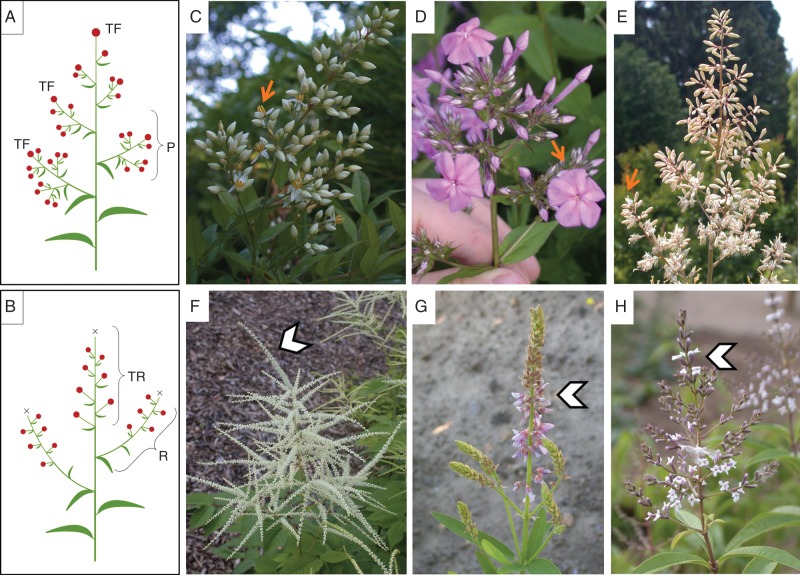Fig. 1.
Inflorescence types (A, B) and studied species (C–E). (A) Scheme of a panicle characterized by its pyramidal form, showing gradual reduction of lateral partial inflorescences to individual flowers. Terminal flowers terminate every axis (TF). (B) Scheme of a compound raceme. Compound racemes are characterized by their multiple racemes in lateral (R) and terminal (TR) positions and lack of terminal flowers (X). (C–E) Panicles (with arrows indicating early opening terminal flowers) and (F–H) compound racemes (with arrowheads pointing at the terminal racemes): (C) Nandina domestica (Berberidaceae); (D) Phlox drummondii (Polemonaceae); (E) Macleaya odorata (Papaveraceae); (F) Aruncus dioicus (Rosaceae); (G) Desmodium canadense (Fabaceae); (H) Aloysia triphylla (Verbenaceae). Note that the racemes of D. canadense (G) bear two-flowered fascicles instead of single flowers. Abbreviations: TR, terminal raceme; R, lateral raceme; TF, terminal flower; P, partial inflorescence.

